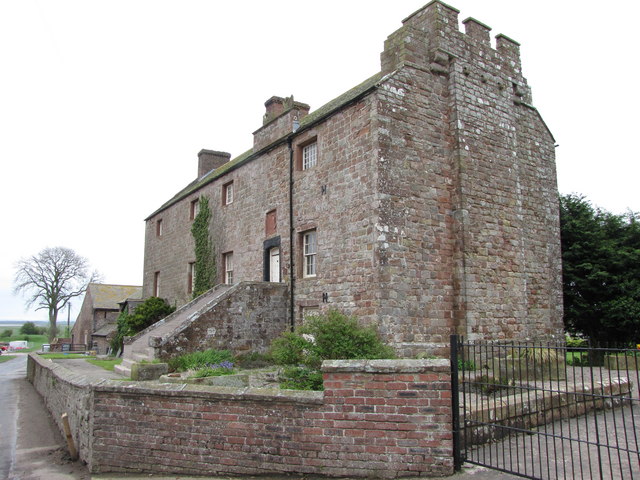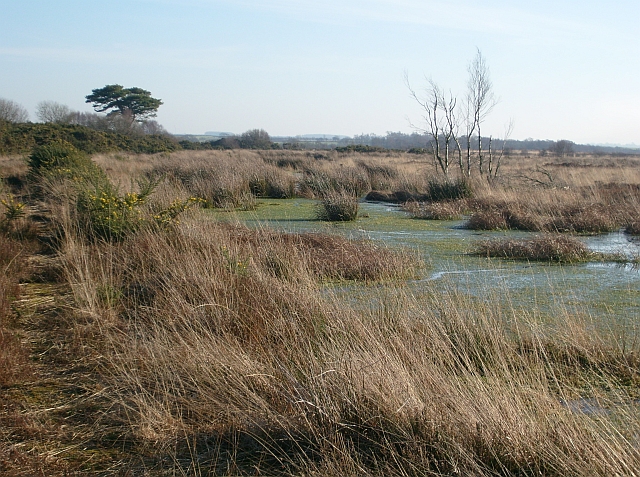Drumburgh Castle - geograph.org.uk - 912711.jpg on:
[Wikipedia]
[Google]
[Amazon]
Drumburgh ( ) is a small settlement in Cumbria, England. It is northwest of the city of
 In the 14th century a
In the 14th century a
Retrieved : 2012-08-17
 The nature reserve of Drumburgh Moss (NGR NY 255 586 ) is a peat bog located immediately south of the village, purchased by the Cumbria Wildlife Trust in 1981; various extensions have been purchased since then. It is a Site of Special Scientific Interest (SSSI), a National Nature Reserve (NNR), and a Special Area of Conservation (SAC).
The nature reserve of Drumburgh Moss (NGR NY 255 586 ) is a peat bog located immediately south of the village, purchased by the Cumbria Wildlife Trust in 1981; various extensions have been purchased since then. It is a Site of Special Scientific Interest (SSSI), a National Nature Reserve (NNR), and a Special Area of Conservation (SAC).
Cumbria County History Trust: Bowness-on-Solway
(nb: provisional research only - see Talk page) {{authority control Hamlets in Cumbria Allerdale
Carlisle
Carlisle ( , ; from xcb, Caer Luel) is a city that lies within the Northern England, Northern English county of Cumbria, south of the Anglo-Scottish border, Scottish border at the confluence of the rivers River Eden, Cumbria, Eden, River C ...
and is on the course of Hadrian's Wall
Hadrian's Wall ( la, Vallum Aelium), also known as the Roman Wall, Picts' Wall, or ''Vallum Hadriani'' in Latin, is a former defensive fortification of the Roman province of Britannia, begun in AD 122 in the reign of the Emperor Hadrian. R ...
, near to Burgh by Sands. The village is sited on a gentle hill with a good view in all directions over the surrounding lowlands.
History
The name means 'ridge near the fort' as derived from the Celtic language and the commonOld English
Old English (, ), or Anglo-Saxon, is the earliest recorded form of the English language, spoken in England and southern and eastern Scotland in the early Middle Ages. It was brought to Great Britain by Anglo-Saxon settlement of Britain, Anglo ...
word 'burgh', pronounced as 'bruff' in this instance. Coggabata
Coggabata, or Congavata / Concavata, (with the modern name of Drumburgh) was a Roman fort on Hadrian's Wall, between Aballava (Burgh by Sands) to the east and Mais ( Bowness-on-Solway) to the west. It was built on a hill commanding views over t ...
is the Roman fort referred to in the placename, which was linked by a Roman road to the nearby fort at Kirkbride to the southwest. The fort was located opposite a ford over the Solway Firth, and the site has been both partially overlain by modern housing and additionally it has been damaged by a substantial medieval ditch. John Leland visited in 1539 and reported that the Wall had been heavily robbed to provide for buildings in Drumburgh, such as the castle. The village lies in the old Barony of Burgh, dating from 1092, the baron now being the Earl of Lonsdale. The barony was a bulwark against Scottish invasion across the Solway In 1870-72 the township had a population of 421.
Drumburgh Castle
 In the 14th century a
In the 14th century a peel tower
Peel towers (also spelt pele) are small fortified keeps or tower houses, built along the English and Scottish borders in the Scottish Marches and North of England, mainly between the mid-14th century and about 1600. They were free-standin ...
house known as Drumburgh Castle
Drumburgh Castle is a medieval pele tower in the village of Drumburgh, in Cumbria, England.
History
A pele tower was originally built on this site, near the village of Burgh, by Robert le Brun in 1307, on the site of a former tower that had been ...
was built here by Thomas, Lord Dacre, whose coat of arms are placed over an entrance at second-floor level. Licence to crenellate the preceding tower had been granted in 1307 to Robert le Brun. It passed by marriage in the 15th century to Jacob Harington, but by 1480 it was ruinous. It again needed urgent repairs in 1580 and by 1593 it was simply a fortified farmhouse, occupied by a bailiff, with a datestone over the upper doorway that was inscribed 1518.
In 1646 Cuthbert Orfeur, a tenant of the Earl of Arundel, complained that he had been forcibly removed from the old castle by Lord Dacre
Baron Dacre is a title that has been created three times in the Peerage of England, every time by Hereditary peer#Writs of summons, writ.
History
The first creation came in 1321 when Ralph Dacre, 1st Baron Dacre, Ralph Dacre was Hereditary peer# ...
's agent. In 1678 the Duke of Norfolk sold the building to John Aglionby and by 1696 Sir John Lowther was the owner and during his time alteration works were carried out. After a long period of neglect it was fully restored as a private dwelling in the 1970s. It has extremely thick walls built with stones taken from Hadrian's Wall.
Transport
Canals
The Carlisle Navigation Canal (1821–1853) ran in a straight cut from Burgh by Sands to Drumburgh before turning east to avoid Drumbugh Hill and reaching the Solway atPort Carlisle
Port Carlisle is a coastal village in Allerdale, Cumbria, England. It is in the civil parish of Bowness-on-Solway. Its original name was Fisher's Cross, but when it became the terminus of the Carlisle Canal it was renamed Port Carlisle. During ...
. The Port Carlisle Railway Company filled in the canal and rail passenger services commenced in 1854.
Railways
Drumburgh railway station was a junction forPort Carlisle
Port Carlisle is a coastal village in Allerdale, Cumbria, England. It is in the civil parish of Bowness-on-Solway. Its original name was Fisher's Cross, but when it became the terminus of the Carlisle Canal it was renamed Port Carlisle. During ...
on the old branch line to Silloth. It had an island platform and a signal box. A horse-drawn passenger service was provided between Drumburgh and Port Carlisle
Port Carlisle is a coastal village in Allerdale, Cumbria, England. It is in the civil parish of Bowness-on-Solway. Its original name was Fisher's Cross, but when it became the terminus of the Carlisle Canal it was renamed Port Carlisle. During ...
from 1856, replaced in 1914 by steam propulsion until a steam railmotor 'Flower of Yarrow' was introduced, running until the branch closed in 1932.Cumbria RailwaysRetrieved : 2012-08-17
Natural history
 The nature reserve of Drumburgh Moss (NGR NY 255 586 ) is a peat bog located immediately south of the village, purchased by the Cumbria Wildlife Trust in 1981; various extensions have been purchased since then. It is a Site of Special Scientific Interest (SSSI), a National Nature Reserve (NNR), and a Special Area of Conservation (SAC).
The nature reserve of Drumburgh Moss (NGR NY 255 586 ) is a peat bog located immediately south of the village, purchased by the Cumbria Wildlife Trust in 1981; various extensions have been purchased since then. It is a Site of Special Scientific Interest (SSSI), a National Nature Reserve (NNR), and a Special Area of Conservation (SAC).
Micro-history
In 1821 Thomas Clark, a blacksmith from Drumburgh, was arrested on a charge of stabbing a labourer on the new canal.Ramshaw, Page 15See also
*Listed buildings in Bowness
Bowness is a civil parish in the Borough of Allerdale in Cumbria, England. It contains 36 listed buildings that are recorded in the National Heritage List for England. Of these, one is listed at Grade I, the highest of the three grades, ...
References
;Notes ;Sources # Lee, Joan (1998). ''The Place Names of Cumbria''. Cumbria County Council. . # Ramshaw, David (1997). ''The Carlisle Navigation Railway''. Carlisle : P3 Publications. . # Salter, Mike (1998). ''The Castles and Tower Houses of Cumbria.'' Malvern : Folly Publication. .External links
Cumbria County History Trust: Bowness-on-Solway
(nb: provisional research only - see Talk page) {{authority control Hamlets in Cumbria Allerdale